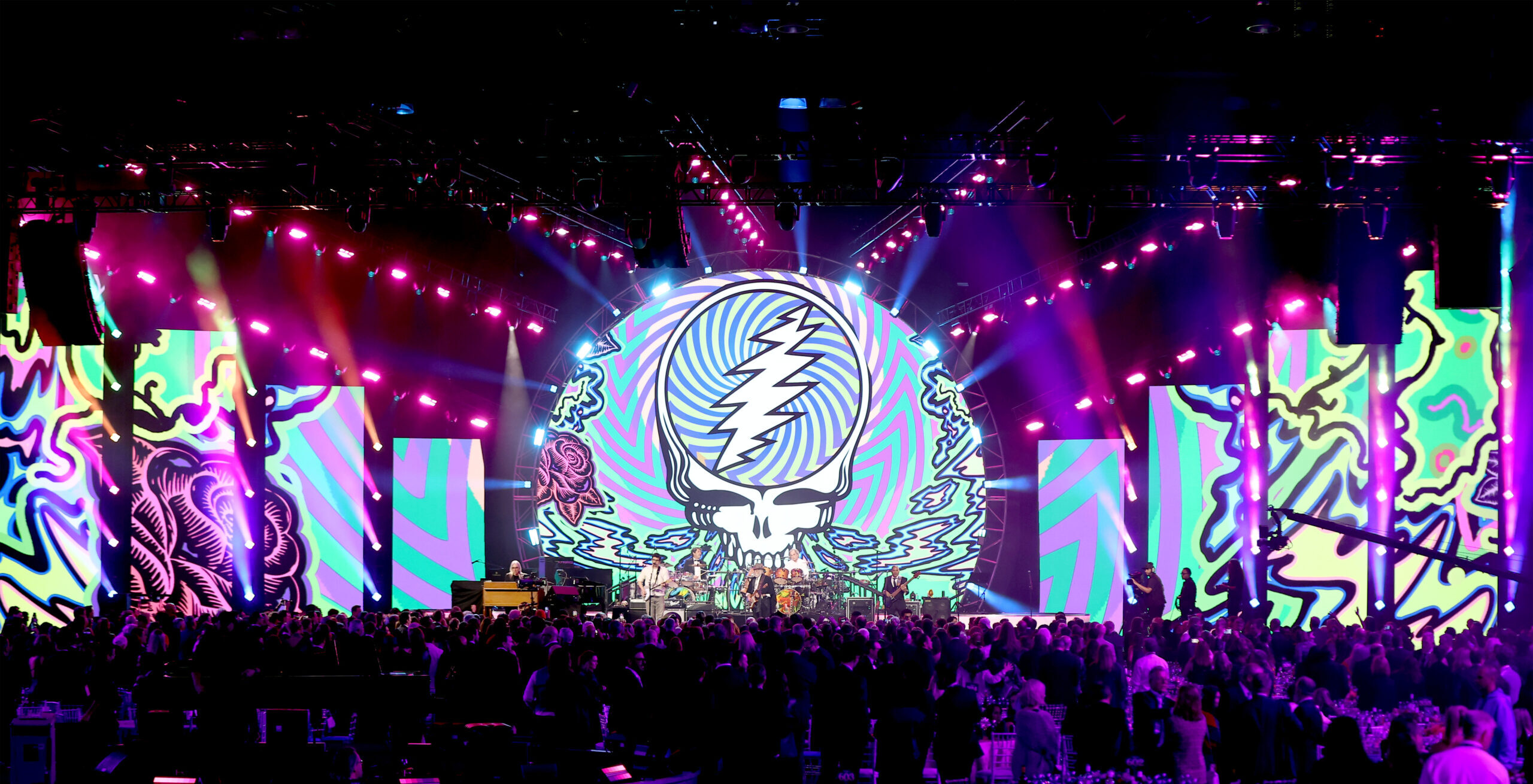The Black Worker
“The Black Worker,” programmed by Yasmina Price, runs February 7 through 13 at the Brooklyn Academy of Music in New York.I Am Somebody (Madeline Anderson, 1970).The story of Diouana, a young Senegalese woman hired by a bourgeois French couple in Ousmane Sembène’s La noire de… (1966), finds common ground with that of militant organizing by the League of Revolutionary Black Workers in Finally Got the News (1970). Thousands of miles separate Antibes, in the French Riviera, and Detroit, in the American Midwest. The former is a fiction film, and the latter a documentary. The material conditions of individual domestic work are far removed from unionized labor in the auto industry. Still, these two films both have a place in the genealogy of cinematic negotiations with the concurrent and interlocking oppressions of race, class, and gender. “The Black Worker” applies an internationalist lens to capitalism’s record of slavery and colonization through fifteen films made between the 1960s and 2020s. While showing there is no singular reality of “The Black Worker,” this program brings together episodes of rebellion, riot, and resistance in interdependent struggles over wages, political rights, and everyday life.Union Struggles and Media MonopoliesCinema is itself an industry and a set of labor relations, whose dominant social, political, and economic architecture has always reflected and consolidated classed, racial, and gendered hierarchies of subjugation. On the African continent and across the diaspora, Black filmmakers have worked to make the cinema an arena where hegemonic norms are undermined and unsettled by opposing narratives—portraying the disenfranchisement and exploitation of Black workers and taking up the pedagogic task of exposing the reasons for this dispossession as a starting point for their undoing. These artists have not merely switched the representational codes from negative to positive; they have repositioned a cultural struggle on different ideological terms. The documentaries Finally Got the News and Madeline Anderson’s I Am Somebody (1970) demonstrate the conjugation of cinema and Black working-class organizing, using film as a tool of political education and recordkeeping. Finally Got the News (Peter Gessner, Rene Lichtman, and Stewart Bird, 1970).Anderson was commissioned by Hospital Workers Union Local 1199 to chronicle the 1969 strike of over 400 hospital workers in Charleston, South Carolina, almost all of whom were Black women. She had herself been turned away from joining a film editors’ union, whose membership was almost entirely made up of white men, and approached the documentary from a militant kinship—making a work of shared politicized experience. Her montage braids archival newsreels and television broadcasts with the narrative voiceover of one of the strikers, Claire Brown, endowing a portrait of collective power with intimate insights into the lives of Black women workers on more holistic terms, attuned to the overlaps between the domestic and professional domains. Finally Got the News centers the League of Revolutionary Black Workers, which saw the creation of independent media as part of their organizational strategy, seizing the means of representation alongside the means of production. Among their publications were several newsletters, such as Spear, and—most notably—two newspapers, Inner City Voice and The South End, through which they were also able to articulate their internationalism, including solidarity with the Palestinian struggle. The League saw both the instructive and propagandist value of offering a corrective to the narrative monopoly of the capitalist order that deployed pejorative images of Black workers and amelioratory panegyrics to their white counterparts, while feeding white anxieties about the Black threat to their employment security that impeded the possibility of worker solidarity. While emphasizing the unequal degree of exploitation between Black and white autoworkers—reflected in differences in pay, protections, access to “skilled” jobs, and elsewhere—the League’s media maintained that the ultimate target was capital itself.Top: Blue Collar (Paul Schrader, 1978). Bottom: S’en fout la mort (Claire Denis, 1990).Black Autonomy, White Hegemony, and SolidarityFinally Got the News was directed by a group of white filmmakers—Peter Gessner, Rene Lichtman, and Stewart Bird—from Newsreel, the leftist media collective. The dynamic between the League and the filmmakers entailed frictions and complications. Many of the Black autoworkers were suspicious of the crew’s motivations, leading to a lack of communication and a patchy filming process, with the camera being excluded from certain events. Creative differences arose as to whether a historical gloss of American slavery would be included (it eventually was, in an efficient opening montage). The resulting documentary is a potent vehicle for the League’s Marxist-Leninist approach to Black liberation and labor

“The Black Worker,” programmed by Yasmina Price, runs February 7 through 13 at the Brooklyn Academy of Music in New York.

I Am Somebody (Madeline Anderson, 1970).
The story of Diouana, a young Senegalese woman hired by a bourgeois French couple in Ousmane Sembène’s La noire de… (1966), finds common ground with that of militant organizing by the League of Revolutionary Black Workers in Finally Got the News (1970). Thousands of miles separate Antibes, in the French Riviera, and Detroit, in the American Midwest. The former is a fiction film, and the latter a documentary. The material conditions of individual domestic work are far removed from unionized labor in the auto industry. Still, these two films both have a place in the genealogy of cinematic negotiations with the concurrent and interlocking oppressions of race, class, and gender. “The Black Worker” applies an internationalist lens to capitalism’s record of slavery and colonization through fifteen films made between the 1960s and 2020s. While showing there is no singular reality of “The Black Worker,” this program brings together episodes of rebellion, riot, and resistance in interdependent struggles over wages, political rights, and everyday life.
Union Struggles and Media Monopolies
Cinema is itself an industry and a set of labor relations, whose dominant social, political, and economic architecture has always reflected and consolidated classed, racial, and gendered hierarchies of subjugation. On the African continent and across the diaspora, Black filmmakers have worked to make the cinema an arena where hegemonic norms are undermined and unsettled by opposing narratives—portraying the disenfranchisement and exploitation of Black workers and taking up the pedagogic task of exposing the reasons for this dispossession as a starting point for their undoing. These artists have not merely switched the representational codes from negative to positive; they have repositioned a cultural struggle on different ideological terms. The documentaries Finally Got the News and Madeline Anderson’s I Am Somebody (1970) demonstrate the conjugation of cinema and Black working-class organizing, using film as a tool of political education and recordkeeping.

Finally Got the News (Peter Gessner, Rene Lichtman, and Stewart Bird, 1970).
Anderson was commissioned by Hospital Workers Union Local 1199 to chronicle the 1969 strike of over 400 hospital workers in Charleston, South Carolina, almost all of whom were Black women. She had herself been turned away from joining a film editors’ union, whose membership was almost entirely made up of white men, and approached the documentary from a militant kinship—making a work of shared politicized experience. Her montage braids archival newsreels and television broadcasts with the narrative voiceover of one of the strikers, Claire Brown, endowing a portrait of collective power with intimate insights into the lives of Black women workers on more holistic terms, attuned to the overlaps between the domestic and professional domains.
Finally Got the News centers the League of Revolutionary Black Workers, which saw the creation of independent media as part of their organizational strategy, seizing the means of representation alongside the means of production. Among their publications were several newsletters, such as Spear, and—most notably—two newspapers, Inner City Voice and The South End, through which they were also able to articulate their internationalism, including solidarity with the Palestinian struggle. The League saw both the instructive and propagandist value of offering a corrective to the narrative monopoly of the capitalist order that deployed pejorative images of Black workers and amelioratory panegyrics to their white counterparts, while feeding white anxieties about the Black threat to their employment security that impeded the possibility of worker solidarity. While emphasizing the unequal degree of exploitation between Black and white autoworkers—reflected in differences in pay, protections, access to “skilled” jobs, and elsewhere—the League’s media maintained that the ultimate target was capital itself.


Top: Blue Collar (Paul Schrader, 1978). Bottom: S’en fout la mort (Claire Denis, 1990).
Black Autonomy, White Hegemony, and Solidarity
Finally Got the News was directed by a group of white filmmakers—Peter Gessner, Rene Lichtman, and Stewart Bird—from Newsreel, the leftist media collective. The dynamic between the League and the filmmakers entailed frictions and complications. Many of the Black autoworkers were suspicious of the crew’s motivations, leading to a lack of communication and a patchy filming process, with the camera being excluded from certain events. Creative differences arose as to whether a historical gloss of American slavery would be included (it eventually was, in an efficient opening montage). The resulting documentary is a potent vehicle for the League’s Marxist-Leninist approach to Black liberation and labor struggle that also presents a lucid case study of the knotted power dynamics in the broader Left’s attempts at interracial solidarity.
Paul Schrader’s Blue Collar (1978) and Claire Denis’s S’en fout la mort (1990), likewise directed by white filmmakers, invite confrontations with enduring norms of authorial control in narrative fiction features. Blue Collar imagines the proletarian camaraderie of Zeke, Smokey, and Jerry, a trio of autoworkers, two Black and one white, nicknamed the “Oreo Gang,” played by Richard Pryor, Yaphet Kotto, and Harvey Keitel. Its inability to deeply engage with the fullness of racial antagonisms can be read as either a wishful misapprehension of smooth social integration or a utopic proposition of interracial worker solidarity. Blue Collar is also marred by its reliance on transparently racist representational codes and stereotypes, and—if we look beyond the world within the film to the conditions of its making—by an erasure of Black creative agency. By some accounts, Schrader appropriated the original idea for the film from Sydney Glass, the son of an assembly-line worker, who had to appeal through the Black caucus of the Writers Guild of America to recover some writing credit.1 Although Schrader’s film has been commended for its visceral depiction of factory conditions, the film’s oversimplifying anti-union story entirely elides the history of the League of Revolutionary Black Workers, or traces of any similar efforts, ultimately enacting the defanging and demobilizing potential of cinematic false consciousness.
Like Pryor’s improvisatory performance in Blue Collar, the expressive force of Isaach de Bankolé and Alex Descas in S’en fout la mort suggests how the labor of Black actors might exceed directorial authority. Contextualized by the chaos of an illegal cockfighting ring in a bleak Parisian banlieue, the film succeeds in diagnosing an inherited system of racialized domination which began with the French incursion into the African continent—into which Denis has personal insights, having been raised in the colonies. The sinuous, shadowy narrative of underground economies and immigrant labor was inspired by Frantz Fanon’s writing on the psychic wages of racial othering and subjugation under colonization.


Top: Handsworth Songs (John Akomfrah, 1986). Bottom: Soleil Ô (Med Hondo, 1967).
Migration, Colonization, and Agriculture
Shifting from the French to the British colonial legacy, Handsworth Songs (1986) was directed by John Akomfrah and produced by the Black Audio Film Collective, a group of independent Black British filmmakers and artists of which he was a founding member. Their shared project entailed a serious intervention in the politics of representation, challenging not only racist conventions but also the very form in which they were rendered. Haunted by mournful malaise, absence, and the uncertainty of how to live with an unresolved past, the essayistic Handsworth Songs lays bare how the historical arc of British colonialism was integral to the supposedly “postcolonial” experience, and certainly the climate of the Thatcher regime. Responding to the violently policed riots that broke out in Birmingham in 1985—themselves responding to ubiquitous police brutality and harassment—it presents a counternarrative to the racialized and criminalizing framing of the official accounts. Authorizing immigrant working-class Caribbean communities to tell their own stories via a multivocal collage of interviews and pieced-together archival footage, Handsworth Songs recasts the uprisings as intelligible responses to continual disempowerment.
Operating on a kindred political and aesthetic terrain, the swell of Pan-African filmmaking in the preceding decades gave rise to some of the most robust cinematic reckonings with Black labor, migration, and colonization. With his incendiary Soleil Ô (1967), the militant Mauritanian Med Hondo directly addressed the conditions of immigrant African labor in Europe, a subject he returned to in Les Bicots-nègres, vos voisins (1974). Hondo’s cinema is an audiovisual assault against colonialism and capitalism. The partially autobiographical Soleil Ô is notable for synthesizing stylistic experimentalism with its political intent, sequencing an eruptive, fragmented patchwork of polemics, oral storytelling, psychic alienation, caustic and absurdist humor, and allegorical conjuring.


Top: Nationalité immigré (Sidney Sokhona, 1975). Bottom: Xaraasi Xanne: Crossing Voices (Bouba Touré and Raphaël Grisey, 2023).
A fellow Mauritian, Sidney Sokhona likewise drew on his personal ordeals to articulate a testimony of precarious labor as a call to arms. Nationalité immigré (1975) is about a rent strike against the squalid conditions that were the norm for hostels housing immigrant workers, and Sokhona enfolded the strength of collective action into the making of the film, involving his fellow tenants and neighbors. Hondo and Sokhona both mix fictional reconstruction and documentary, a hybrid approach that characterized much of the political storytelling of African cinema as early as the mid-1950s.
The visual and aural archival bricolage of Xaraasi Xanne: Crossing Voices (2023) is a descendant of Nationalité immigré and Soleil Ô. The film stemmed from a collaboration between the Malian photographer, researcher, and filmmaker Bouba Touré and French filmmaker and visual artist Raphaël Grisey. Touré, a former factory and farmworker who later trained as a projectionist, passed away shortly before the documentary was completed. The film, guided in part by his narration, conveys a history of resistance to colonial dependency and predatory economics, deftly linking contemporary extractive agriculture, the use of African soldiers in the First World War, immigrant worker conditions in 1960s Europe, and the imperial character of development aid. These interwoven circumstances are positioned as the seedlings of subjugation and insurgency that led to the 1976 formation of Somankidi Coura, a militant Malian farmer cooperative of which Touré was a cofounder. Touré’s voice mixes with those of griots, diasporic songs, readings, and radio transmissions, linking together historical geographies of not only domination but liberatory action.
Colonization had severe consequences for agricultural systems and rural populations. In 1975, Senegalese ethnographer and filmmaker Safi Faye made Kaddu Beykat (“Words of Farmers”), another highly polyvocal film made in informal collaboration with her family and the community of her Serer home village, Fad’jal. It levels an astute political critique against the government’s neocolonial agricultural policies of imposed monoculture and taxation. In exposing a problem of rural labor and documenting how the community responded to it, she makes an epistemic claim for indigenous ways of knowing and telling. Faye deftly worked against the regulatory functions of cinema and ethnography as tools of colonization by repurposing them as vehicles for a participatory, insider understanding of Serer lifeways.


Top: Kaddu Beykat (Safi Faye, 1975). Bottom: Man Sa Yay (Safi Faye, 1980).
Gender, Women, Domestic Space, and Intimate Storytelling
Even in liberatory, oppositional cinemas, Black women filmmakers are underrepresented, and the patriarchal and masculinist dimensions of oppression are often insufficiently addressed. Two films by Safi Faye in this program suggest how much is to be gained by recovering the cinematic inheritance of works by Black women. Man Sa Yay (1980) is another documentary-fiction hybrid, a moving record of solitude. Moussa, a Senegalese student in Berlin, negotiates the hostility and ignorance of a foreign city, where he is subjected to the exoticization of the white gaze. His alienation is interposed with the financial strains of his day-to-day life, which are exacerbated by the money he sends back home but softened by the way social bonds are maintained in the accompanying epistolary exchanges.
Anderson’s I Am Somebody and a too-brief section at the end of Finally Got the News consider the particular conditions of Black women through powerful voice-overs and montages of their labors. A much more recent work, Mati Diop’s Atlantique (2019), recalls the films of Hondo and Sokhona by demystifying the false imaginaries of a better life and better fortunes awaiting on the other side of the journey from Africa to Europe, but presents them in reverse context. The story takes place in Dakar and unfolds as an indictment of neocolonial labor practices centered on women, interwoven with a ghostly love story.
Another antecedent is Ousmane Sembène’s La noire de…, unquestionably the Senegalese titan’s most well-known film. It is an elegant indictment of the racialized hierarchies of power that endured in the purportedly postcolonial era, finding the material and psychic impacts of economic dependency in the story of Diouana, played with magnetic power by M’Bissine Thérèse Diop. This intimate study remains in the claustrophobic orbit of the employers’ home, illuminating a familiar geometry of exploitation and marginalization. With its formal language, La noire de… restores Diouana’s centrality and dignity, ultimately positioning her as the architect of a refusal to be subjugated in its tragic final act.


Top: La noire de... (Ousmane Sembène, 1966). Bottom: Fannie’s Film (Fronza Woods, 1981).
Presenting the other side of the generational continuum is the story of a Black woman elder in Fannie’s Film (1981), one of just two shorts made by Fronza Woods. While the portrait of the 65-year-old revolves around her job cleaning a New York pilates studio, it also exceeds it, honoring the self-determined tempo and little pleasures of her life. A sequence of Fannie cleaning a mirror recalls a similar scene in I Am Somebody, both marrying a moment of self-recognition and self-imagining with a gesture of domestic work. As it shows her picking up discarded towels with patience and grace, humming and whistling to herself, the film neither romanticizes her working situation nor limits her existence to those terms. Woods makes room for Fannie to articulate her unimpeachable autonomy: she shares her dream of going to Canada, memories of her childhood in Savannah, and infectious delight about her “out of this world” linen closet.
By prioritizing the domestic space and feminized forms of labor, La noire de… and Fannie’s Film also present another scale of thinking through the imbrication of race, gender, and class, pointing to more intimate and interpersonal dimensions of how power is structured and expressed. Billy Woodberry’s Bless Their Little Hearts (1984) does the same. He was part of the second generation of the aesthetically and politically dissident young filmmakers that came to be referred to as the LA Rebellion, who took a Third Worldist position of anti-colonial cultural struggle in defiance of how Black people were being cinematically rendered by mainstream Hollywood, as well as in Blaxploitation. Bless Their Little Hearts finds a working-class Black family in the Watts neighborhood of Los Angeles facing the hopelessness of unemployment and the exhaustion of scarcity, contending with the toll of both on their internal fabric. Sparse, neorealist vignettes of Black life reveal an abiding shame, frustration, and despair that ultimately cannot be resolved within a single household. While fatherhood and masculinity are thematized through the protagonist, Charlie Banks (Nate Hardman), the narrative pays serious attention to the experience of his wife, Andias (Kaycee Moore), overburdened with overlapping demands of labor. Moore takes center stage in the most memorable moment, a scene of domestic confrontation unleashing the film’s tightly wound frustrations into an emotional cataclysm.


Top: Bless Their Little Hearts (Billy Woodberry, 1983). Bottom: Chez Jolie Coiffure (Rosine Mbakam, 2018).
Cameroonian Rosine Mbakam’s Chez Jolie Coiffure (2018) is contained within the titular hair salon and documents the vibrant ecosystem around its formidable owner, Sabine. The camaraderies, complicities, and complexities of African women are foregrounded as they maneuver around the exclusions of citizenship, informal labor, and white supremacist beauty standards. In Mbakam’s attempt to craft a more ethical documentary process in a way that recalls Faye’s approach, adjusting the imbalance of power between documentarian and subject, Chez Jolie Coiffure is a window onto the diasporic expanse of economically compelled movements between the African continent and Europe that constitutes an interconnected world of shared survival.
Set in factories, agricultural fields, homes, hair salons, and hospitals, and chronicling domestic chores, industrial labor, underground economies, migrant work, and striking unions, these films explore material conditions and psychological states of exploitation through forms as varied as spectral revenge narrative, experimental agitprop, neorealist drama, and archival documentary. They represent only a fraction of the works that could be screened under the banner of “The Black Worker,” produced over the course of 60-odd years but sketching out a dialectical narrative that far precedes the invention of cinema and may well be traced back to 1492. Another name for the cultural and artistic battleground for most of these films—constantly, not newly, under threat—is Black Liberation, an incomplete process, a whirlwind and not a straight line, passed down as the call and response of a collective performance. Across their disparate and interconnected times and places, these films record a history of rehearsals.
- Eithne Quinn, A Piece of the Action: Race and Labor in Post–Civil Right Hollywood (Columbia University Press, 2020), 210–211; John M. Wilson, “Buttoning up Blue Collar,” Los Angeles Times, May 13, 1980, H1. ↩










![From freeCodeCamp to CTO with Robotics Engineer Peggy Wang [Podcast #159]](https://cdn.hashnode.com/res/hashnode/image/upload/v1738967132406/6ab8c7bb-397a-42b3-bb91-ff9c4842ead0.png?#)

































































